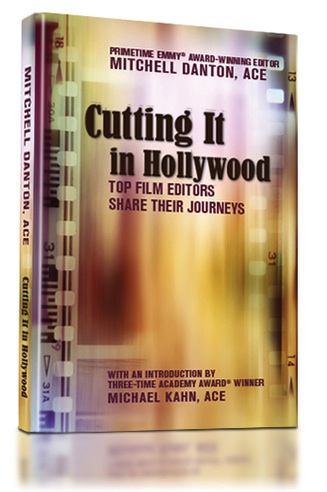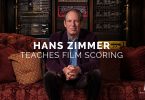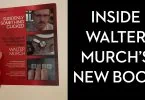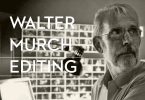Film Editors on Film Editing
If you want to learn more about film editing the best people to learn from are film editors. On this blog there’s plenty of places to do just that!
In a recent post I gathered together a complete guide to becoming a film editor, buying the right equipment and building a career. I called it my ALT-Film School for Editors, which delivers a thorough curriculum on film editing via some truly remarkable online resources.
In this post I’ve gathered together some of the best most recent resources on the craft of film editing, that I hope will both educate and inspire you to be a better editor.
The opening video from Rob Tinworth is a fantastic example of the kind of insights you can gain by seeing a film editor’s timeline deconstructed with aplomb.
For a closer look at more timeline’s from numerous feature films, documentaries and TV shows, check out this previous post – Inside Professional Editing Timelines.
Tonight's film edited and ready to go. One day robots will probably be editing my packages for me. @BBCNewsnight @davidgrossman #fcpx pic.twitter.com/tYd4UQ28s8
— Stuart Denman (@StuartDenman) October 14, 2016
In this tweet you can see an example of a 7 minute segment of BBC’s Newsnight cut in FCPX. One day, maybe a computer algorithm will replace editor’s entirely, but I sincerely hope not. H/T to Alex4D for the find.
Edit Fest London, Avid Video Interviews
One of the benefits of being at events like Edit Fest London is that you get to hear wisdom soaked discussions from incredibly talented editors on the intricacies of the craft.
If you weren’t fortunate enough to be there in person Avid has put together some excellent interviews with several of the 2016 participants.
In the seven videos released so far in the new Making the Cut series, there’s a great range of topics and genres to enjoy. (Check out the playlist above for them all)
For example, editor Nathan Nugent discusses cutting the taught Room whilst Pixar editor Sarah Reimers talking about editing animated features like Brave and Finding Dory and Gary Dollner chats about cutting comedies such as I’m Alan Partridge and Veep.
Editing animation is a different animal entirely. You’re far more involved in the development of the story and developing and crafting the story as it goes along. – Sarah Reimers
Cutting It In Hollywood – Book Review
Primetime Emmy award winning editor Mitchell Danton ACE’s new book Cutting It In Hollywood is a valuable addition to any editor’s reading list.
Part autobiography, part film editor’s industry guide book, it’s great to have access to a modern first hand account of the industry, as seen through the experiences of someone coming up in the 1980’s and 90s. (Unless you’re too young to think that’s modern!) The book is also introduced by Spielberg’s legendary editor Michael Kahn, ACE.
Mitchell worked on show’s like Beverly Hills 90210, Dawson’s Creek, Survivor, American Idol and many others. Scattered throughout every chapter are helpful pearls of wisdom that are worth taking note of.
A lot of people can cut, but many are not willing to put in the extra mile and effort to make every cut perfect. – Mitchell Danton, ACE.
The book would be particularly inspiring for younger editors looking to find their own way up in the industry today. To this point, some of the final chapters cover the enumerate different ways younger editors and assistants got their foot in the door.
Put your best effort into everything you cut, no matter how small [the gig might be] because if it turns out well, it might get you noticed and lead to other things in the future. You just never know.
Personally I felt like the book took a little while to find it’s feet and could have done with a bit of trimming for pace here and there.
There’s just one or three too many name drops to give thanks to all the nice people that Mitchell got to work with over the years. Which is understandable in an autobiography, when those names and faces mean so much to the author, but as reader I was more interested in the lessons learned and insights on the craft. Of which there are many!
But as these are scattered liberally throughout every chapter, you really have to read the whole book to be sure you’ve absorbed them all.
Commitment is often the difference between a good editor and a great editor.
Cutting It In Hollywood is essentially a book of two halves split between autobiography and interviews with, and the career accounts of, other editors and assistants. The second ‘half’ delivers a diverse range of interviews with post production professionals working in a variety of genres and even covers editors who then moved into directing.
These chapters really work to ground the book even more concretely into the world of today’s cutting room and make for helpful reading for anyone looking to get into film and TV editing. So be sure you read the final chapters on ‘Getting into the Biz’, ‘Feature Editing’ and ‘Beyond the Cutting Room’.
Most of the really good editors I know project an air of being in control in every situation, while never coming across as arrogant. That’s the demeanor to strive for, because such an attitude will keep things moving forward.
All in all, Mitchell has a unique and entertaining story to share, that should inspire his readers that hard work and dedication are powerful factors in anyone’s journey to success.
In our profession, perception is everything.
Whether you’re viewed as a feature editor, scripted television editor, reality editor, or assistant if that’s what you’re doing at the time – regardless of what you’ve done before – that’s how producers and directors will see you.
Your best bet is to decide on a career trajectory that you want, and suffer through unemployment rather than go too far off-course. Whether my fear was real or imagined, I felt that if I went back to assisting I would never get another chance to edit. Therefore, my goal was to keep editing and to get directors and producers to only see me in that light.
Because the year after one moves up to editor can be make or break.
Buy on Amazon or CuttingItInHollywood.com
This Guy Edits – The Sequel
If you’ve not yet watched any of editor Sven Pape’s superb ‘This Guy Edits‘ then you’ve really been missing out.
In this 30+ part video series you can watch Sven work his way through an entire independent feature film, whilst vlogging some excellent film editing tutorials at the same time. I included it as essential viewing in my Alt-Film School for Editors post.
In this new series of videos Sven is collaborating with Simon Cade of DSLRGuide, on the process of cutting a trailer for a UK based film festival. It’s another great opportunity to learn from Sven and seem him handle a completely different project.
I’ve included the playlist for the first 5 episodes in the playlist above which includes the process of setting up the collaboration and making the first cuts.
Art of The Cut – An Editor’s Treasure Trove
Last but not least is the treasure trove that is Steve Hullfish’s continuing series of in-depth interviews with some of the industry’s best and brightest editors. If there’s a big new movie out (big in either the commercial or critical sense) then the chances are Steve has an interview with the editor involved.
Each and every one of these interviews is well worth taking the time to read through and digest. It will make you a better editor!
The first Art of The Cut post I could find was this one from March 2014 with Gravity co-editor Mark Sanger.
SANGER: Alfonso has the film in his head. He dives between Editorial and VFX like a tasmanian devil, working on the cut with me, then updating the animation as I’m supplying the latest cut to VFX.
Changes he would make in animation would dictate an editorial change which he would need to make very quickly with me either in person or down the phone in order to not let either department get ahead of one another.
More recent editions include The Magnificent Seven, Ghostbusters, The Girl on the Train, Birth of a Nation and many, many more.
Steve’s discussion with Steven Rosenblum on editing Birth of a Nation features some great insights on the craft of ‘movie time’, temp music, audience perspective and much more.
HULLFISH: Perspective is huge for an editor, right? Determining the vantage point for telling the story.
ROSENBLUM: Absolutely. And whether you’re going to tell it as text, whether you’re going to tell it as subtext, whether it’s going to be behavioural.
In “Courage Under Fire,” Matt Damon is chain smoking and he’s got a heroin problem. And rather than play the scene as a dialogue between him and Denzel Washington, I decided whenever Matt did anything with the cigarette: fumbled it, picked it up, put it down, re-lit it, had one lit and another one going, I would play that just to see what happened. And it’s in the movie that way. Because all that stuff, the subtext of the scene, became the spine of the drama of what was wrong with this guy. And it taught me big lessons.
When I was cutting the pilot of the TV show thirtysomething I thought wouldn’t it be interesting if you played most of a whole conversation between two women on a baby that one is carrying. It tells the audience in a visual way what the drama of the relationship is. And It just puts the viewer in the position of having to look at the world in a different way and we did that a lot with “Birth of a Nation” because that’s was what was foremost in Nate’s mind, not the power structure, but the oppressed – the not seen.








Jonny – instead of posting the link to the search results for Art of the Cut, here is the link to the “tag” of the series:
http://www.provideocoalition.com/tag/art-of-the-cut
and here is the bitly of it:
bit.ly/ARTOFTHECUT
The book – Art of the Cut – will be published in the spring of 2017 by Focal Press. Reserve yours now! 🙂
Thanks Steve, I’ll update the link in the post. Can’t wait for the book!